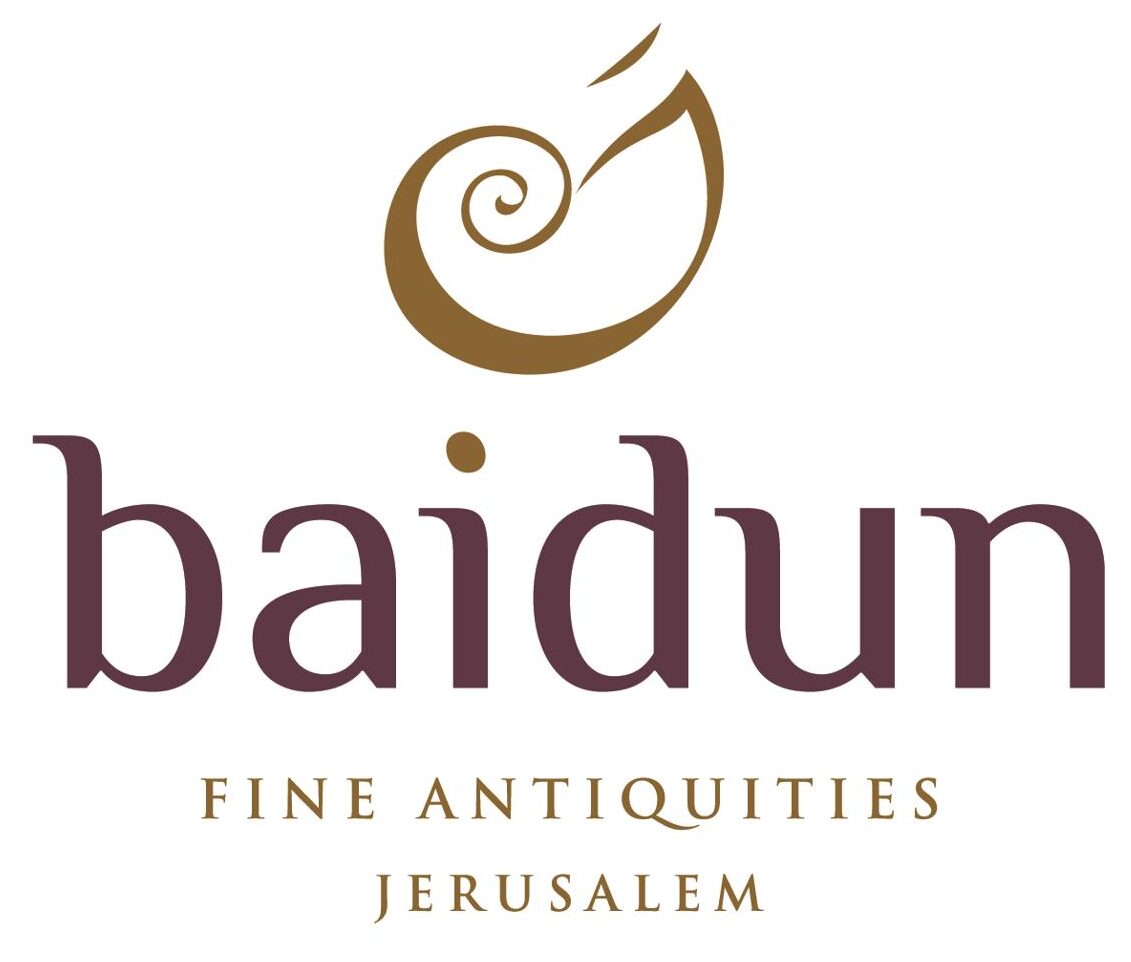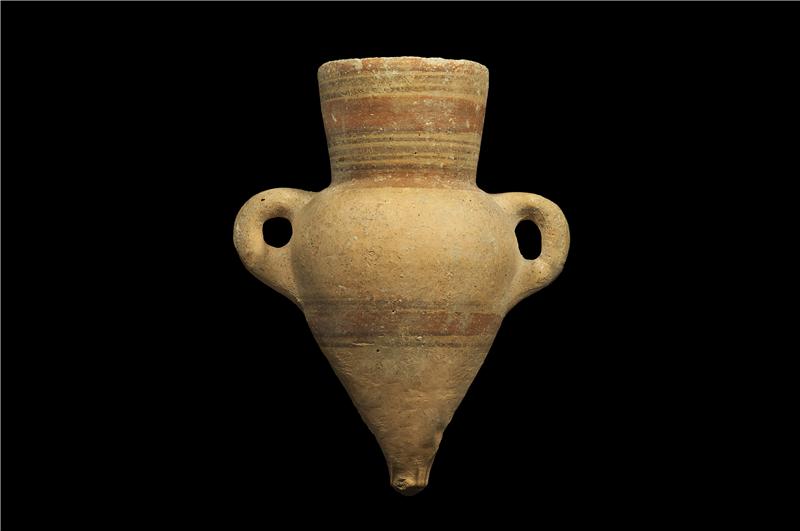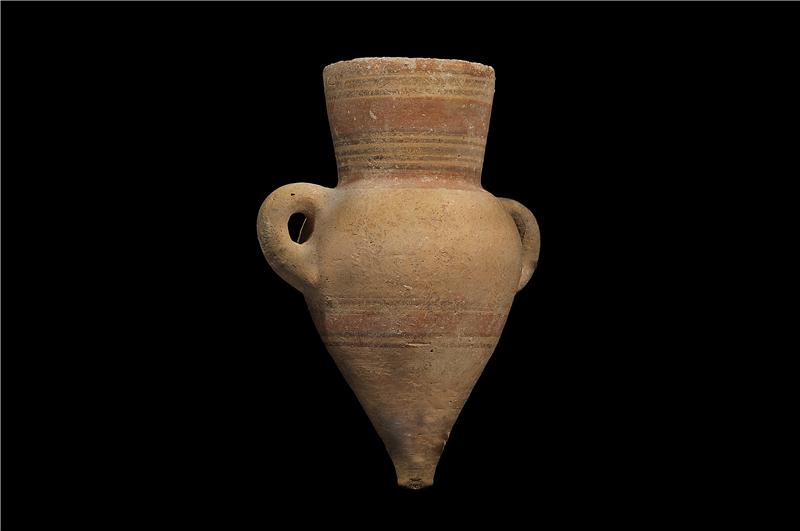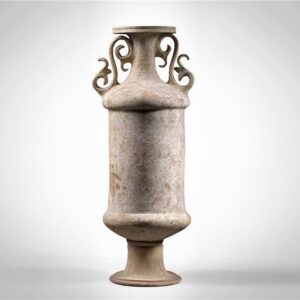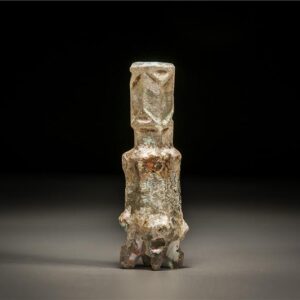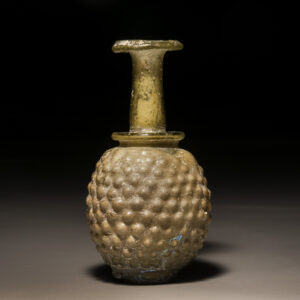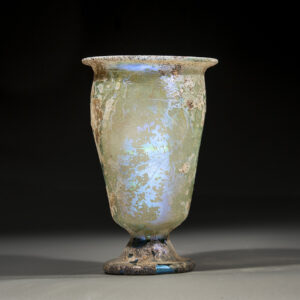This striking, geometrically-decorated amphoriform vessel was made by the Iron Age inhabitants of what is modern-day Palestine, Syria, Jordan and Israel. Amphorae were used all over the Eastern Mediterranean for storage and transport of both liquids (oil and wine) and other materials. The largest examples were taken on Bronze Age to Iron Age transport vessels, and their pointed-base design permitted their close packing in the holds which is sometimes still retained in underwater archaeology finds.
The current piece, while fairly large, is evidently not a plain transport vessel as it is too well decorated and finished. As an amphoriskos, it was more likely used in a domestic setting, probably to store milk or oil. It has a harmonious and sophisticated design, with banded red decoration over a milk-glazed brown ground. The geometric quality is countermanded by a pair of oversized handles. Pieces such as this are characteristics of the Israelites, a ‘tribal’ group that straddled the Early and Middle Iron-Age along with the Philistines and the Judeans. Much of the work on this group and their contemporaries has been historically and textually-led as they lie at the very roots of Judaism, Christianity and Islam. Archaeological data indicates a sophisticated, large-city culture with surprisingly equable educational traditions, heading a complex trading network that transported staple and luxury items across the Middle East.
Perhaps the best known Israelite sculptural entity is Ashtoreth – known as Astarte to the Egyptians, the Phoenicians and the Cypriots – and who was worshipped both centrally and domestically. Other anthropomorphic and zoomorphic figurines are also known, while everyday Israelite objects – such as this – are notable for their simple and understated elegance. This is an imposing and impressive piece of ancient art.



